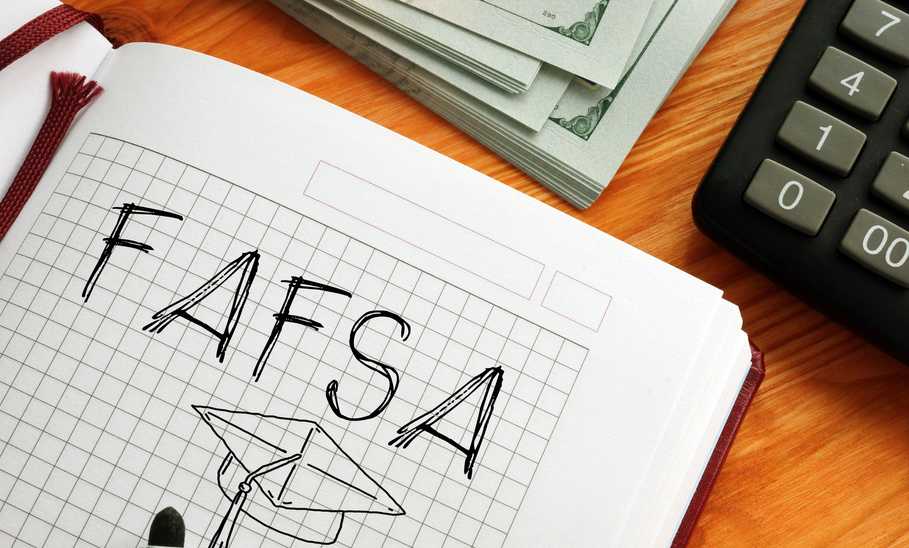FAFSA 2025 Requirements: Who Qualifies

Our evaluations and opinions are not influenced by our advertising relationships, but we may earn a commission from our partners’ links. This content is created by TIME Stamped, under TIME’s direction and produced in accordance with TIME’s editorial guidelines and overseen by TIME’s editorial staff. Learn more about it.
If you’re in college or planning to go soon, filling out the Free Application for Federal Student Aid (FAFSA) is a smart move. The FAFSA collects financial and personal information to assess federal and state financial aid eligibility, and the U.S. Department of Education recently revamped it for the 2024-2025 school year.
Applicants must meet specific FAFSA requirements to qualify for government financial aid to pay for college. These requirements include citizenship, education level, enrollment status, financial need, academic performance, and other criteria. Understanding these requirements and the information needed to complete the form can streamline the process.
To complete the FAFSA, you must provide specific personal and financial information. The process starts by creating a federal student aid (FSA) ID. Your FSA ID includes a username and password that you'll use to log into the Federal Student Aid website to fill out the FAFSA.
Here’s the information required by the Department of Education to fill out the 2024-2025 FAFSA form:
Dependent students must also provide additional information for their parents or legal guardian. Parents must consent to share their personal and financial information and will report similar information as student applicants.
To save time, gather the necessary information and documents before you sit down to fill out the form.
Students must meet certain requirements to qualify for financial aid through the federal government. These include:
In addition, if you’re applying for financial aid from July 1, 2024, to June 30, 2025, you must consent to have federal tax information transferred to your FAFSA form. You must also certify by signature that you will only use aid for educational purposes and aren’t in default on a federal student loan or owe money on a federal student grant.
One recent change to the eligibility requirements relates to Selective Service registration. According to the Federal Student Aid website, an applicant’s registration status with Selective Service no longer affects their eligibility for federal student aid.
Depending on your situation and status, you may also need to meet other requirements. The Department of Education has additional eligibility guidelines and restrictions for special circumstances, including non-U.S. citizens, students with intellectual disabilities, and those with criminal convictions.
There is no FAFSA income limit; anyone who meets the above basic requirements can fill out the FAFSA. In general, the Department of Education uses a range of factors, including income, to determine eligibility for federal aid.
Certain federal aid programs have income-related requirements, such as Pell Grants and Direct Subsidized Loans. The income-related requirements for both federal aid programs for 2024-2025 are as follows:
Eligibility and award amounts for Pell Grants are based on your Student Aid Index, cost of attendance, whether you’re a full-time or part-time student, and whether you’re attending school for a full academic year.
Students in financial need may qualify for Direct Subsidized Loans. The Department of Education pays the interest on Direct Subsidized Loans for eligible students while they’re in school at least half time, during the six-month grace period after leaving school, and during periods of deferment. Eligibility and award amounts are based on demonstrated financial need, your cost of attendance, and other financial aid received.
The recent changes to the FAFSA for the 2024-2025 academic year have altered the financial aid landscape for select borrowers. While some individuals and groups benefit from these changes, others may have difficulty qualifying for as much aid as in the past.
Filling out the FAFSA is required if you want to be eligible for federal financial aid support. There’s no cost to apply, and, depending on your situation, you could qualify for grants or student loans to help cover the cost of attending college.
Federal student loans come with additional benefits for borrowers not available through private loan providers like Sallie Mae or Earnest. These include loan forgiveness programs, deferment and forbearance options, and several payment plans to help make loan repayment more affordable.
It’s possible to lose eligibility to fill out the FAFSA and receive federal student aid. Here are some of the reasons you may lose eligibility.
In many cases, you can regain eligibility through specific actions and guidelines set forth by the Department of Education.
Your chances of receiving federal student aid improve by avoiding some of these common mistakes applicants make.
Using your FSA ID can take up to three days after creating an account. Waiting to create your FSA until you want to fill out the FAFSA could lead to delays.
The Department of Education sets annual deadlines for submitting the FAFSA, and each state has its own deadline. The best strategy is to fill out your form as soon as it’s available.
Even with a simplified form, it’s possible to input incorrect information. Personal information must match the information provided when you created an FSA ID. Because students and parents fill out the FAFSA, it’s easy to mix up the forms or information if you’re not careful.
Only schools listed on your FAFSA will receive your information. You’re allowed to add up to 10 schools at a time. It doesn’t matter if you haven’t applied or been accepted yet. Unless you are 100% certain where you’re going and have been accepted, you should add other schools you’re considering.
Your FAFSA form isn’t complete until it’s signed. Both the student and parent must sign the FAFSA to submit the form and be eligible for financial aid.
The deadline to submit the FAFSA form for the 2024-2025 academic year is June 30, 2025. However, waiting until the last minute could mean missing out on financial aid opportunities.
Delays in the release of the updated form have caused potential concerns about receiving aid packages in enough time to make informed decisions about school. If you plan to attend school this upcoming academic year, fill out your FAFSA form immediately.
There aren’t specific income requirements needed to qualify for federal student aid. The Department of Education considers various factors based on personal and financial information provided on your FAFSA form.
You can be disqualified from receiving federal financial aid if you do not meet basic eligibility requirements, such as being a U.S. citizen or an eligible non-citizen, having a valid Social Security number, being enrolled in an eligible program, and maintaining satisfactory academic progress. Additionally, being in default on federal student loans can also disqualify you.
Approval for federal student aid via the FAFSA is generally straightforward if you meet the eligibility criteria. However, qualifying for need-based financial aid requires meeting additional requirements.
Once your FAFSA has been processed, you’ll receive a FAFSA Submission Summary. Review your information looking for any mistakes. If you find any errors, you can correct your FAFSA form online or through a paper form.
The information presented here is created by TIME Stamped and overseen by TIME editorial staff. To learn more, see our About Us page.



